Many people who garden, go to the farmers’ market, or even shop at Whole Foods have the same problem: they compost more food than they eat. This is because they want to waste less food and be more environmentally friendly.
And we end up making some rather expensive compost. Not because we’re picky or wasteful, but because we don’t know that most of the plants we buy or grow can be eaten, from stem to leaf.
Because we don’t see them in grocery stores or recipes very often and have been told false things about them over time, we think they are bitter, tough, or toxic.
If you haven’t tried food from other parts of the world, you might not know that you can eat squash shoots or pepper leaves, which are unusual leafy greens that might seem “exotic” or even weird to North Americans but are part of the food culture in Southeast Asia.
That isn’t the only part of the world where unconventional produce abounds, however. People in many other countries eat chard stalks, watermelon seeds, and leek greens, among other things, when they are not in season.
You probably already grow these tasty plant “scraps” in your garden. They should have a place in your kitchen other than the veggie stock pot or the compost bin. They’re also important to my “lazy gardening” because they help me grow more food with less work. And who can say no to that?.
Before you toss those leaves aside out of habit, see if they make the list here. With little work, you’ll learn how to make no waste in the kitchen and enjoy a wide range of new tastes and textures.
Green beans are a staple vegetable in many gardens. Most people grow them for the pods but did you know the leaves are edible too? I was surprised to learn you can eat leaves from several types of bean plants!
Eating bean leaves isn’t as strange as it sounds They are nutritious, easy to grow, and can add new flavors to recipes. After researching the topic, I want to share what I learned about using bean leaves in your kitchen
What Bean Plants Have Edible Leaves?
You can eat the leaves of many common bean varieties, including:
-
Green beans (Phaseolus vulgaris) – The typical string bean. Leaves have a mild, spinach-like taste.
-
Yardlong beans (Vigna unguiculata) – A vine bean with very long pods. The leaves are used in Asian cooking.
-
Runner beans (Phaseolus coccineus) – Have pretty scarlet flowers. The leaves taste similar to green beans.
-
Lima beans (Phaseolus lunatus) – Grow in bush or pole forms. More fibrous but still edible.
-
Fava beans (Vicia faba) – Prefer cool weather. Leaves have a slightly bitter taste.
-
Hyacinth beans (Lablab purpureus) – A purple-flowered vine. The leaves are similar to green beans.
So most common bean varieties have edible leaves, including bush and pole/vine types. But some bean relatives like soybeans and peas have less palatable leaves. Always verify before eating leaves from an unfamiliar plant.
How Do Bean Leaves Taste?
Most bean leaves have a spinach-like, greens taste. They are often described as nutty, sweet, or grassy. The texture is tender but fibrous.
Yardlong bean and hyacinth bean leaves have a hint of citrus flavor. Fava leaves are more bitter. Older, larger leaves tend to be more fibrous and less tasty.
Bean leaves make interesting additions to salads and cooked dishes. They hold up well to heat and add complexity versus spinach. And they are far more nutritious than iceberg lettuce!
Nutritional Benefits of Bean Leaves
Bean leaves are packed with vitamins, minerals, and antioxidants. For example, 100 grams of raw green bean leaves contains:
- Vitamin C – 52% RDA
- Vitamin A – 22% RDA
- Calcium – 15% RDA
- Iron – 12% RDA
- Vitamin K – 11% RDA
Bean leaves also provide folate, thiamine, riboflavin, and trace minerals like manganese and zinc. The fiber content exceeds spinach.
This outstanding nutrition profile makes bean leaves a superfood. Like other greens, they support overall health with antioxidants and phytonutrients that reduce inflammation.
When to Harvest Bean Leaves
You can begin harvesting leaves as soon as the plant forms a few leaves. Pinching off some leaves early on may even help the plant branch out and become bushier.
For the best flavor, pick leaves before the plant flowers. Once beans form, leaves tend to get more fibrous. The optimal time is when leaves are young and still expanding.
Don’t decimate the plant by stripping all its leaves. But regular selective picking of larger leaves encourages new growth.
How to Use Bean Leaves in Cooking
Bean leaves work great raw in salads or smoothies. Some ideas:
- Add young leaves to spring mix or baby greens
- Make bean leaf pesto
- Blend leaves into green smoothies
- Skewer bean leaves and grill briefly
Cooked bean leaves taste excellent mixed into:
- Soups – Add leaves at the end. Longer cooking makes them stringy.
- Stir fries – Saute briefly with other veggies.
- Steamed or boiled – Cook just until wilted to retain nutrients.
- Curries and stews – Mix in torn leaves at the end.
Substitute blanched bean leaves for spinach in recipes like spanakopita. Or stuff vine leaves like grape leaves. Grilled bean leaf fritters are also delicious.
Growing Bean Leaves in Your Garden
It’s easy to grow beans and harvest the leaves as a bonus crop. Follow these simple tips:
-
Choose bush or pole bean varieties suited to your climate. Pole beans need trellising.
-
Sow seeds 1-2 inches deep, 2-4 inches apart after danger of frost.
-
Keep soil moist until seedlings emerge. Water 1 inch per week.
-
Fertilize lightly with compost or organic fertilizer once blooming starts.
-
Pinch leaves regularly but don’t defoliate the plants entirely.
-
Pick leaves just before cooking to maximize freshness.
With proper care, most bean varieties will produce prolific leaves. Grow on trellises or fences to save space.
Storing and Preserving Bean Leaves
Like other greens, bean leaves are highly perishable. Use fresh as soon as possible, within 1-2 days. To extend storage:
-
Refrigerate unwashed leaves in a plastic bag for up to 5 days.
-
Blanch leaves briefly then freeze in airtight bags for months.
-
Dehydrate leaves in a food dehydrator or low oven until crispy.
-
Pickle tender young leaves in brine like other veggies.
Dried or pickled bean leaves let you enjoy their unique taste year-round!
Are There Any Risks of Eating Bean Leaves?
Bean leaves are not known to be toxic. However, some basic precautions will ensure safe eating:
-
Only eat leaves from known edible species. Don’t assume all bean relatives are safe.
-
Consume in moderation at first in case of allergy or sensitivity.
-
Wash leaves thoroughly to remove dirt and insecticide residue if non-organic.
-
Don’t eat leaves that are damaged, wilted, or yellowed.
With common sense precautions, bean leaves present no more risks than other edible greens you may eat.
The Final Word on Bean Leaves
While most people only eat the beans, the leaves are a tasty, nutritional bonus! Both bush and vine bean varieties produce abundant edible leaves.
When harvested young, bean leaves make nutritious additions to salads, smoothies, and cooked dishes. They are easy to grow, needing just basic care. And they store well when preserved.
So don’t throw away those bean leaves – eat them! With a mild, spinach-like taste and impressive nutrient content, bean leaves deserve more attention at mealtime.
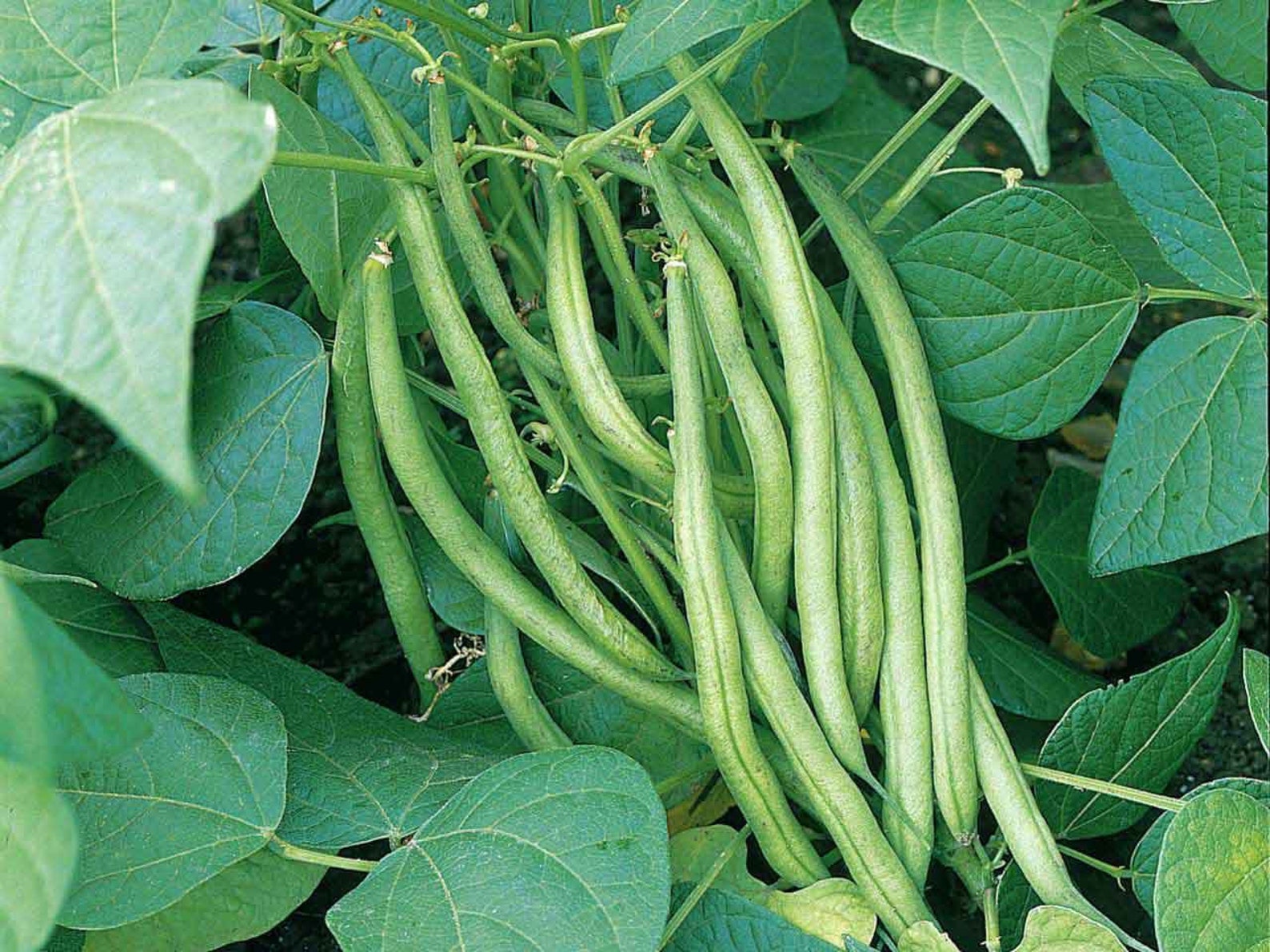
k
Sweet potato leaves
Not to be confused with potatoes (they are not related), sweet potatoes (Ipomoea batatas) are in the same family as morning glories. This is most clear when both plants are in bloom.
The leaves of the sweet potato plant are mild in flavor and abundant in summer. They can be harvested all season long while you wait for the tubers to mature.
You can grow sweet potatoes just for the steady supply of greens in places where they can live all year (they’re a perennial crop in zones 9–11).
The tender stems and leaves are both edible. They’re silky like spinach and wilt beautifully when cooked. Put them in a soup, sauté, or stir-fry, by themselves or with other vegetables. Heat will bring out their sweetness.
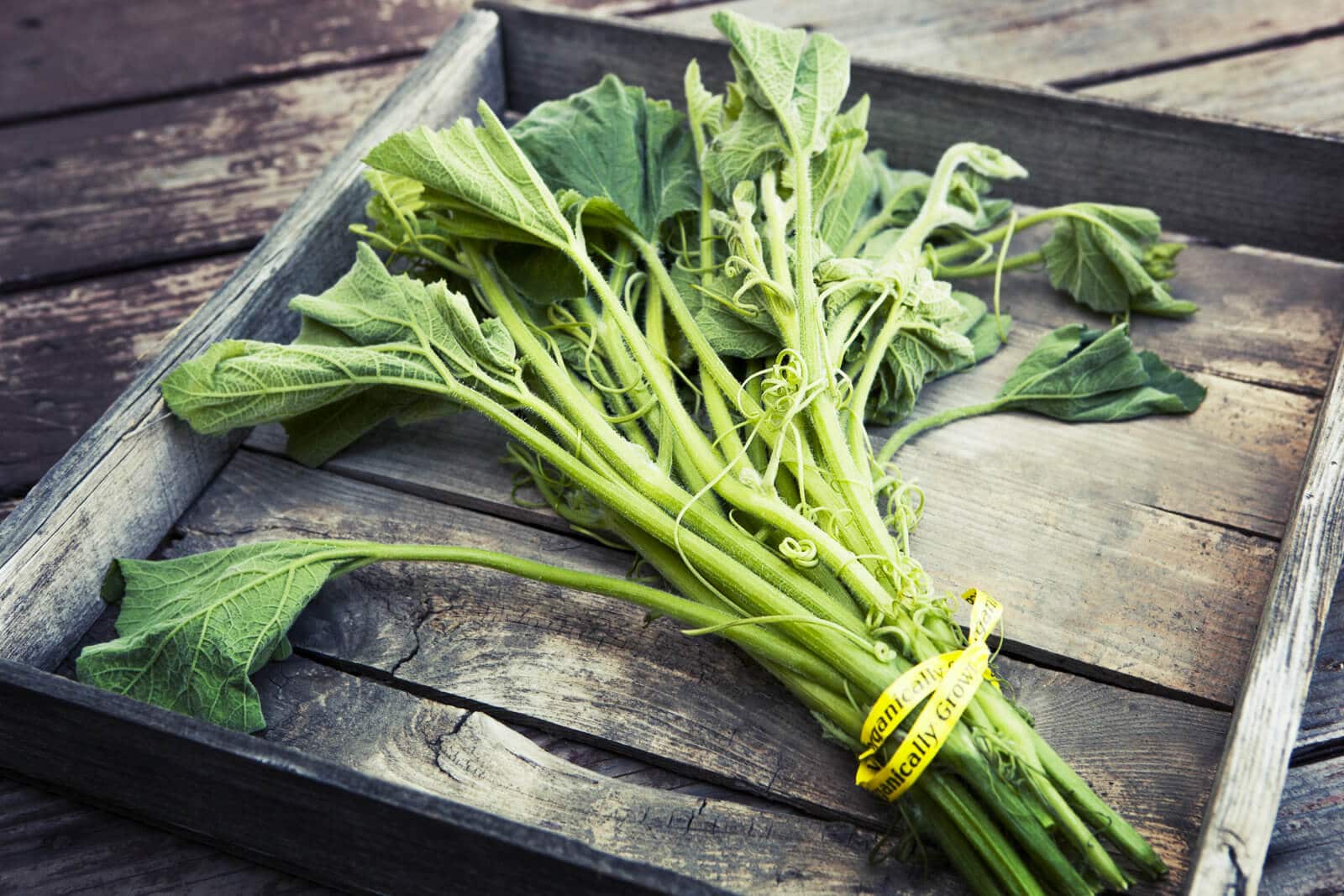
Summer squash and winter squash (from the five cultivated species Cucurbita pepo, C. moschata, C. maxima, C. argyrosperma, and C. ficifolia) are the plants that keep on giving.
As most people know, you can fry zucchini blossoms and roast pumpkin seeds. But did you know you can also eat squash leaves? The vines taste earthy and sweet, like the fruit they bear.
This means the entire plant is edible at every stage of growth, from sprout to fruit. (You’re not going to throw away those thinnings, are you? They’re tasty!) You can use leaves from any plant, but opo squash leaves are traditionally used in Southeast Asian cooking because they are native to that region.
To harvest, snip off the last few inches of the squash vine where you see new growth. There is a group of stems and leaves here called a squash shoot. It is the softest part of the vine. Remove the tendrils (which tend to be tough and stringy) and cook the rest.
You can try them in recipes where you’d normally use chard and other similarly textured leafy greens.

Since both cucumbers (Cucumis sativus) and squash are in the same family (Cucurbitaceae), they have many of the same traits. This includes being the perfect top-to-tail plant where the sprouts, stems, leaves, flowers, and fruit are all edible.
If you want a great salad green, try fresh, crisp cucumber sprouts. You can also eat tender young cucumber leaves. They’re so mild and light that they’ll pick up the flavor of whatever you cook them with, which is why I like them raw.
You just have to be careful not to over-pick the leaves, which can stunt production of the cucumbers. Or, try sowing a flat of cucumber seeds just for the nutrient-packed sprouts or microgreens.

Some people don’t agree with adding tomatoes (Solanum lycopersicum) to this list, but as I’ve said before, tomato leaves are safe to eat in small amounts, just like everything else.
They taste best when used in small amounts in sauces, soups, and salads, where I think their rich, unique flavor works best. Tomato leaves add a strong savory flavor that comes to life when they are chopped or cooked to release their oils.
If you want to make homemade tomato sauce or try to improve store-bought sauce, adding tomato leaves to it is my favorite way to use them.
Don’t be afraid to pick the young, tender leaves along with the green, unripe tomatoes the next time you pick them from the plant.
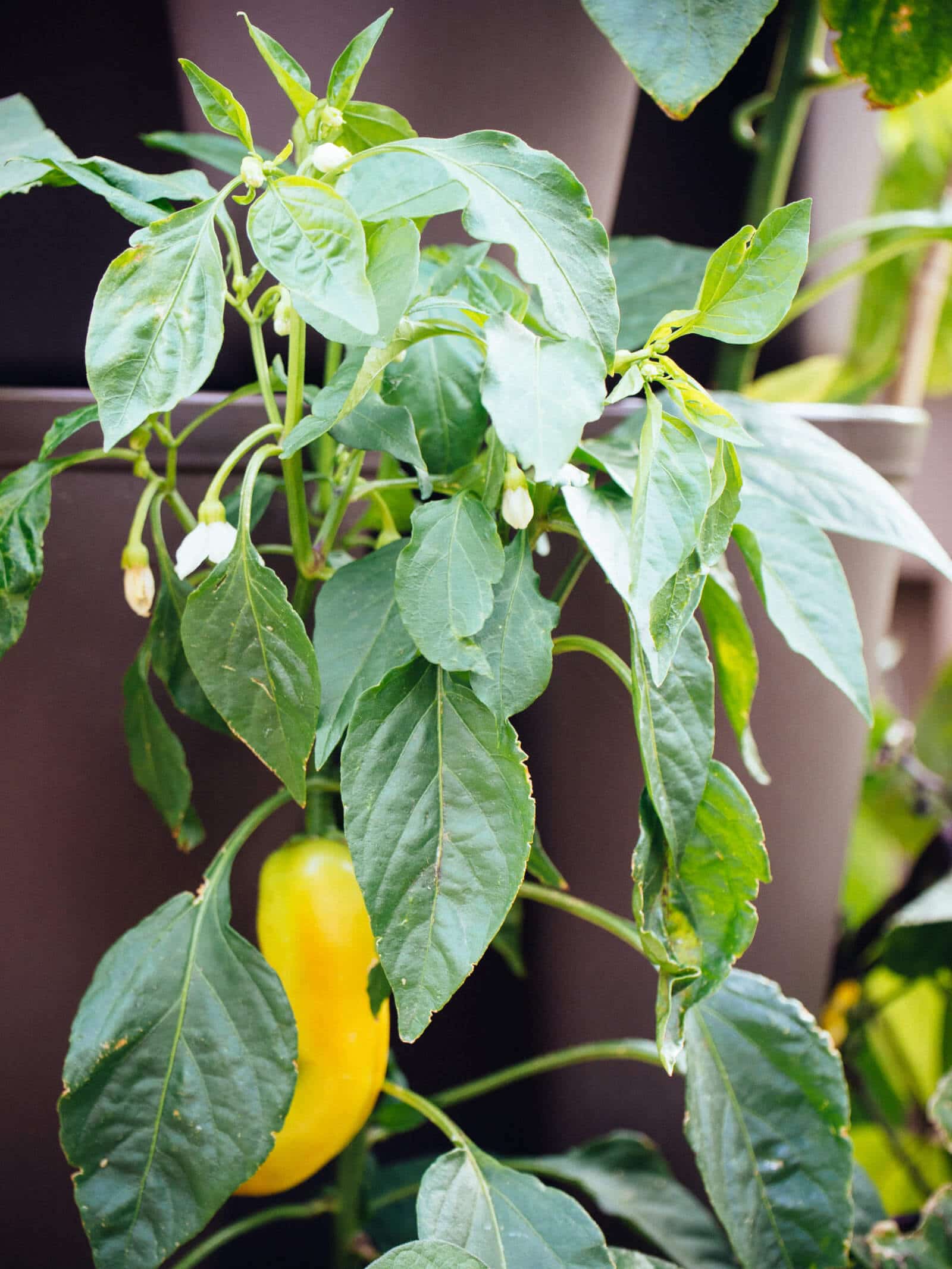
Surprise! You can eat the leaves of the Capsicum annuum and Capsicum frutescens plants that grow sweet peppers and hot peppers. They taste great!
It’s not as strong of a pepper flavor as the peppers themselves, and it tastes a bit like white pepper—light and fragrant.
Peppers get their heat from capsaicin, which is mostly found in the ribs (inner membranes) of the fruit. It doesn’t matter if you use the leaves from a sweet bell or a fiery habanero.
In Filipino food, pepper leaves are often used in tinola soup. In Chinese homestyle cooking, pepper leaves are also used in braises and stir-fries.
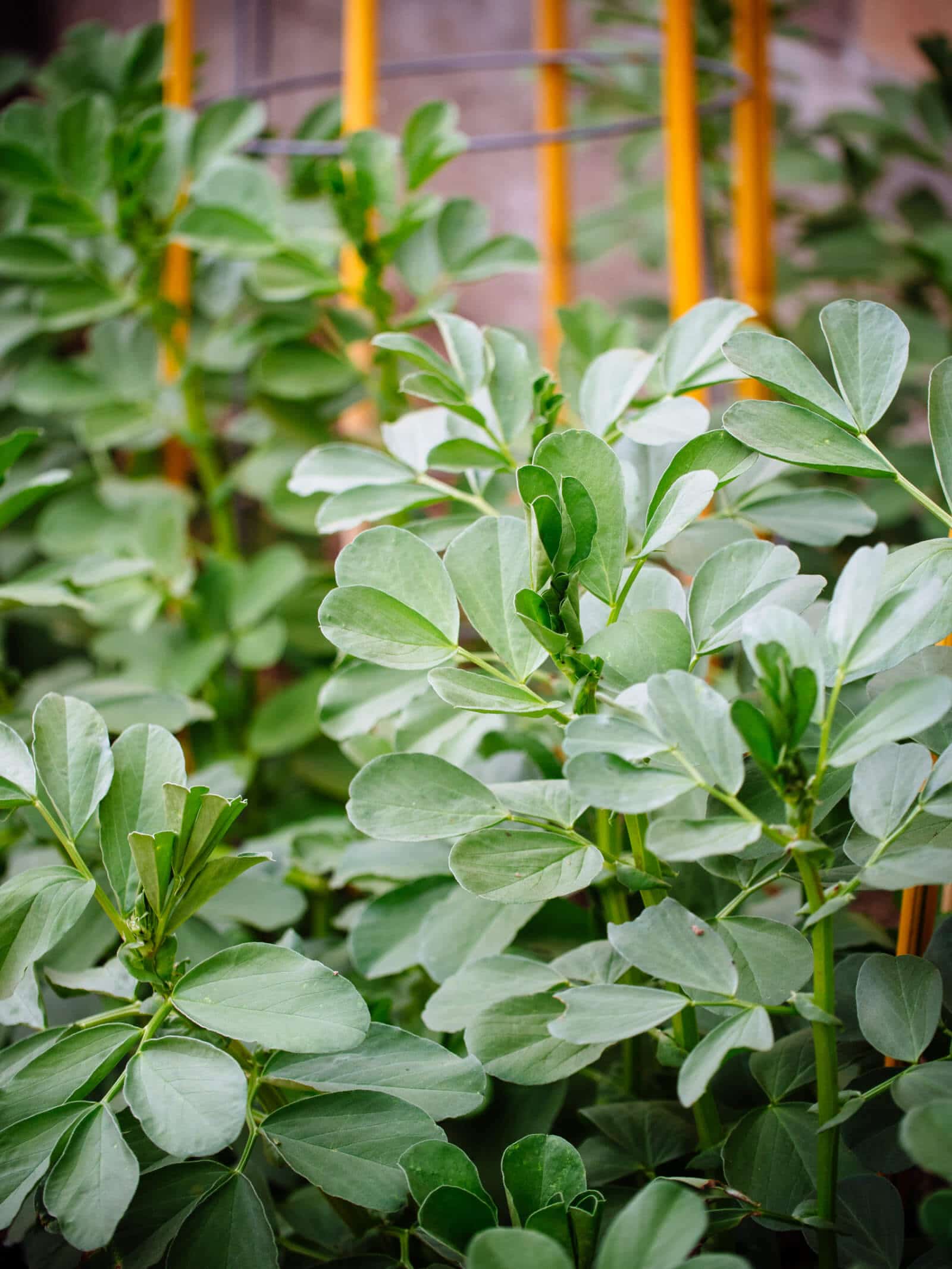
People often think of pea shoots first when they think of the leafy greens of legumes, and for good reason. You can eat pea shoots raw, cook them, or make “pesto” out of them. That’s why they’re one of my favorite greens. ”.
But what about beans?
While most people have eaten green beans, how about bean greens?
Yes, you can eat the leaves of all five types of beans: common green beans (Phaseolus vulgaris), yardlong beans (Vigna unguiculata), runner beans (Phaseolus coccineus), lima beans (Phaseolus lunatus), fava beans (Vicia faba), and hyacinth beans (Lablab purpureus). Like most of the leaves on this list, they’re best used when young and tender.
In this group, fava leaf salads are my favorite because the plants grow tall and thick, and the leaves taste mild, kind of sweet and nutty. You can start harvesting fava leaves weeks before the pods emerge and all through the season.
You can also pick the leaves off of other bean plants, but they aren’t nearly as common as fava greens, and I personally don’t risk production on plants that are just starting out.
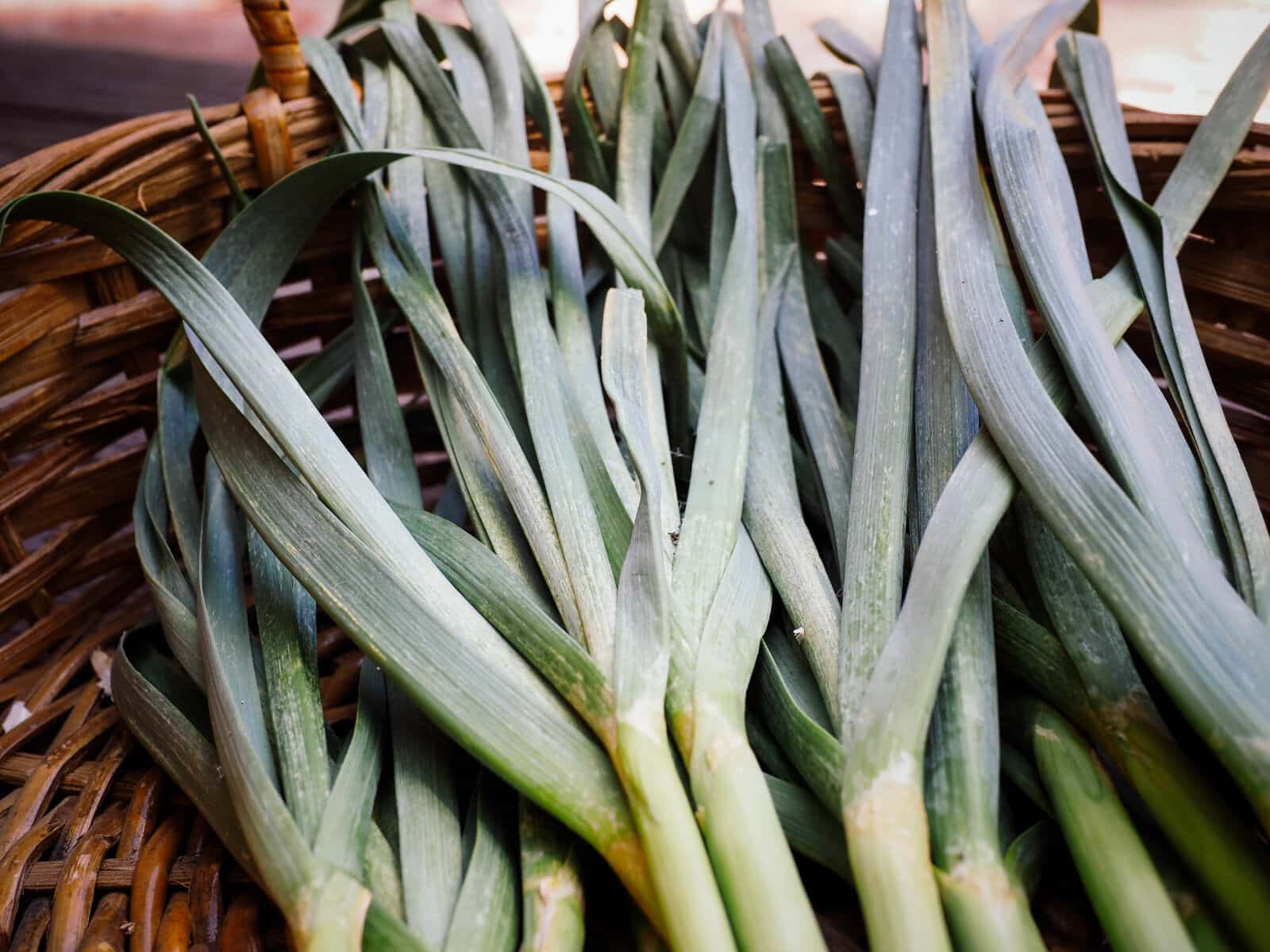
Are you growing these vegetables already?
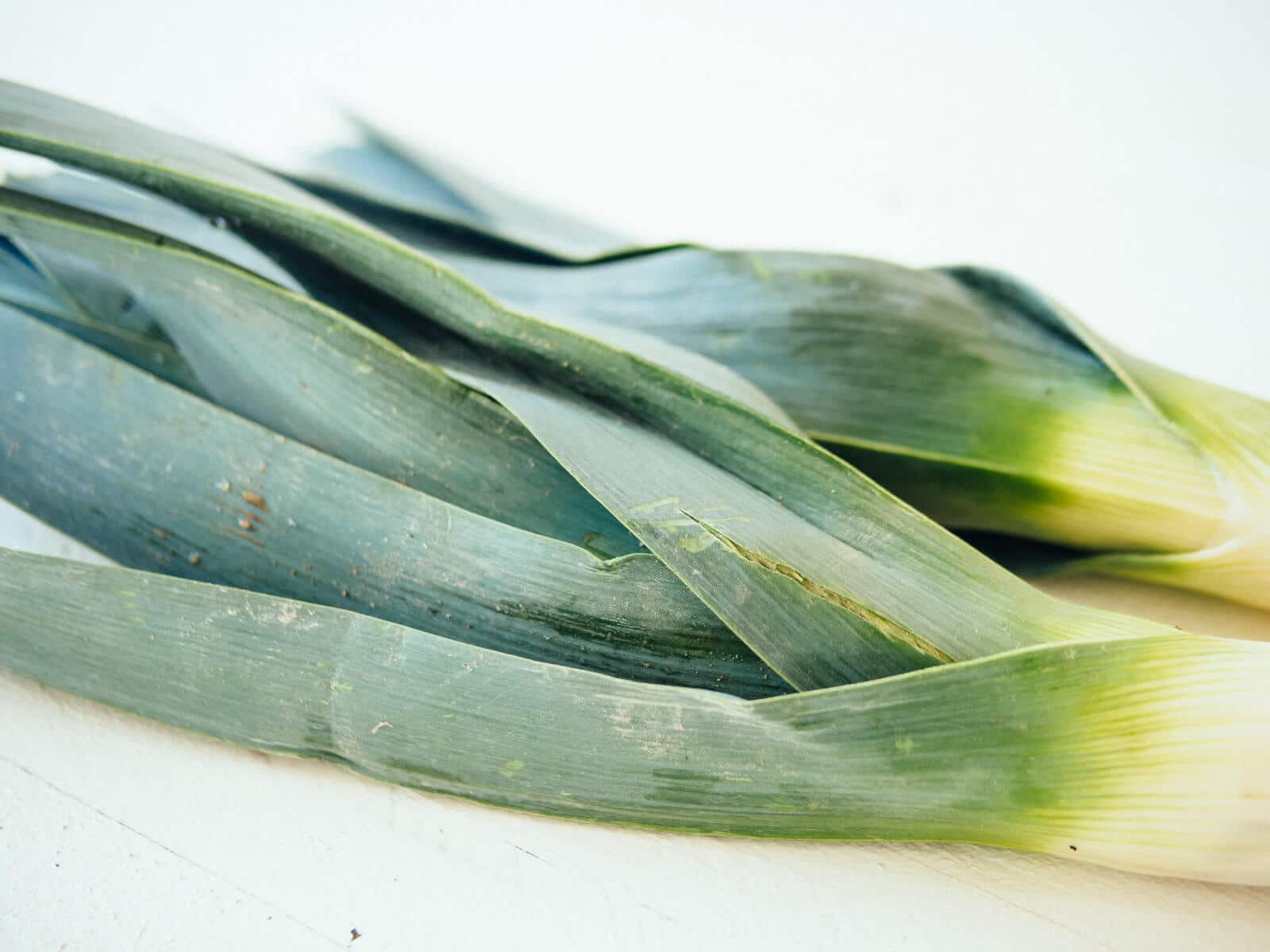
The fact that every recipe you look at says to throw away the dark green ends of the leeks and only use the “white and light green” parts doesn’t help.
It doesn’t help that leek tops are usually dirty and full of grit when you first look at them. (Hey, they can’t help how they’re grown. Have you ever seen a freshly dug carrot that looked appetizing?).
What a surprise! The dark green end (or top, depending on how you look at it) tastes just as good as the white end.
When you pick leeks from your own garden, the tops are soft and smooth, unlike the tough, worn-out leaves that most people associate with store-bought leeks. Once you get them from the store, all you have to do is cut off the wrinkled parts that have been handled, and the leaves will be soft and juicy.
To cook leek tops like onions, toss them in oil over medium heat until they’re soft and smell good.
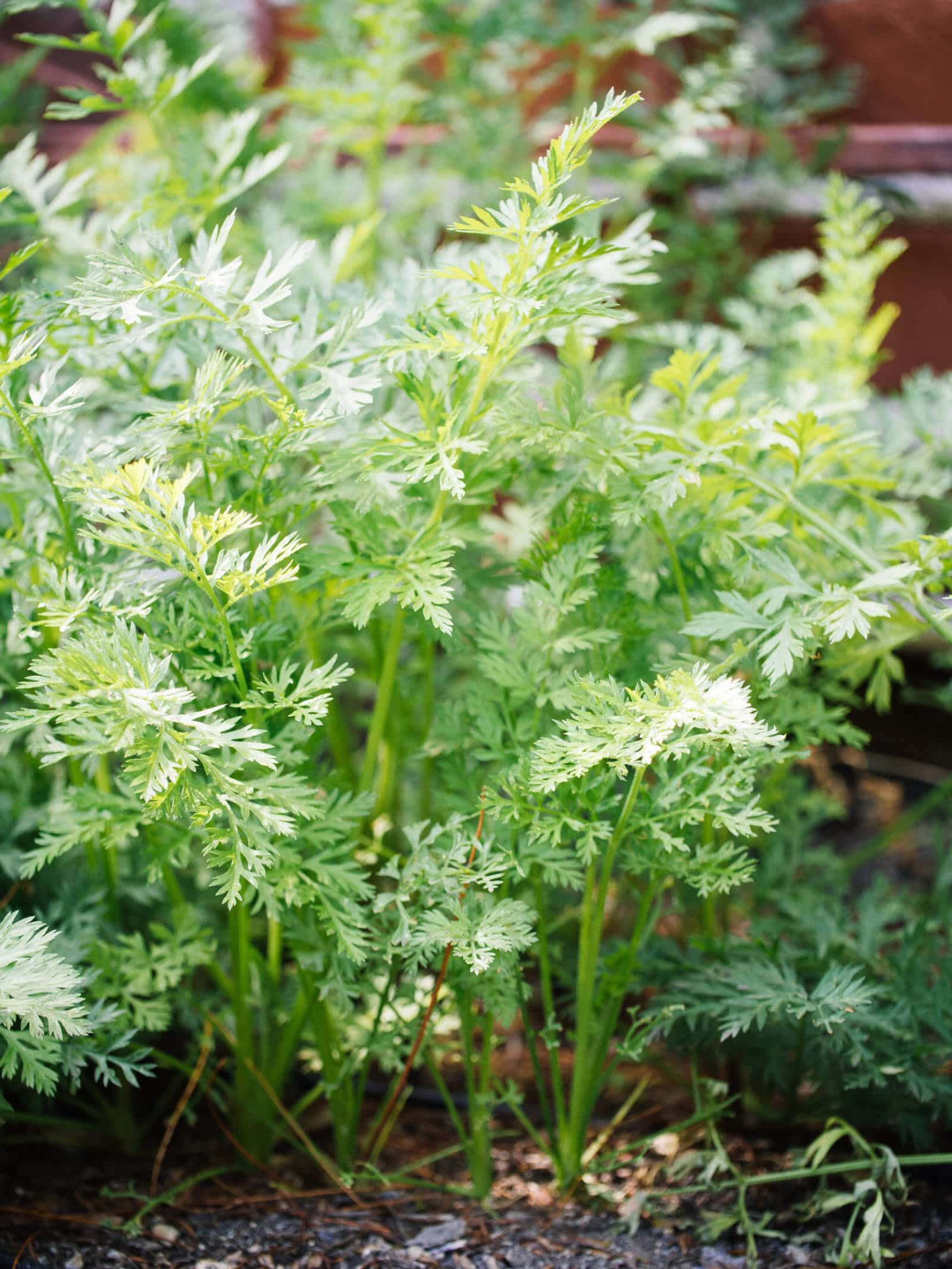
Contrary to popular belief, carrot tops are not toxic. Unpalatable to some tastebuds, maybe, but certainly not poisonous.
Often discarded for having a disagreeable texture, the greens from carrots (Daucus carota subsp. sativus) are best used as an accent or in a condiment, like carrot top salsa.
Like carrots, they have a strong, earthy flavor, and you can sometimes use them instead of parsley to bring out the savory or umami flavor.
Take the tougher stems off of the soft carrot leaves and chop them up very small. You can then add them to soups, salads, or pasta and rice. They’re especially good in minestrone or any rustic vegetable soup as a garnish.
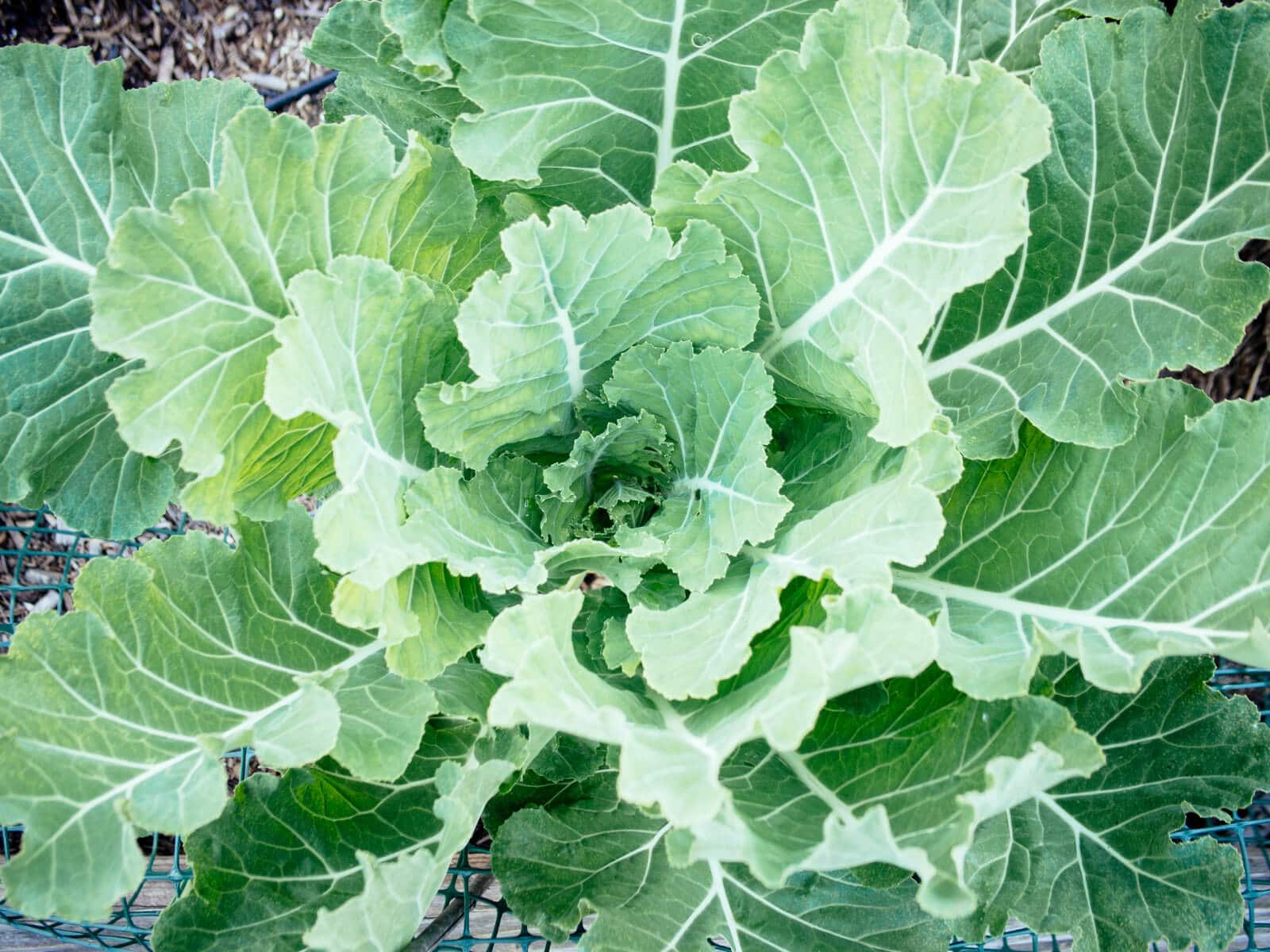
We usually see broccoli (Brassica oleracea) in the store with a head wrapped in a few wilted leaves. We take those leaves off right away before cooking.
But broccoli leaves, the loose rosette of greens that grows around the bud as it grows, are a vegetable in their own right. Yes, you can eat broccoli leaves!.
Cook them as you would a sturdy green like kale or collards. Because they don’t taste strong, they work well in soups, sautés, stir-fries, and braises where they won’t crowd out the other flavors.
You can also eat the leaves of cabbage, cauliflower, kohlrabi, and Brussels sprouts (also called brassicas or cole crops), which are all in the mustard family. Think of them as a bonus harvest while you wait for the heads and sprouts to mature.
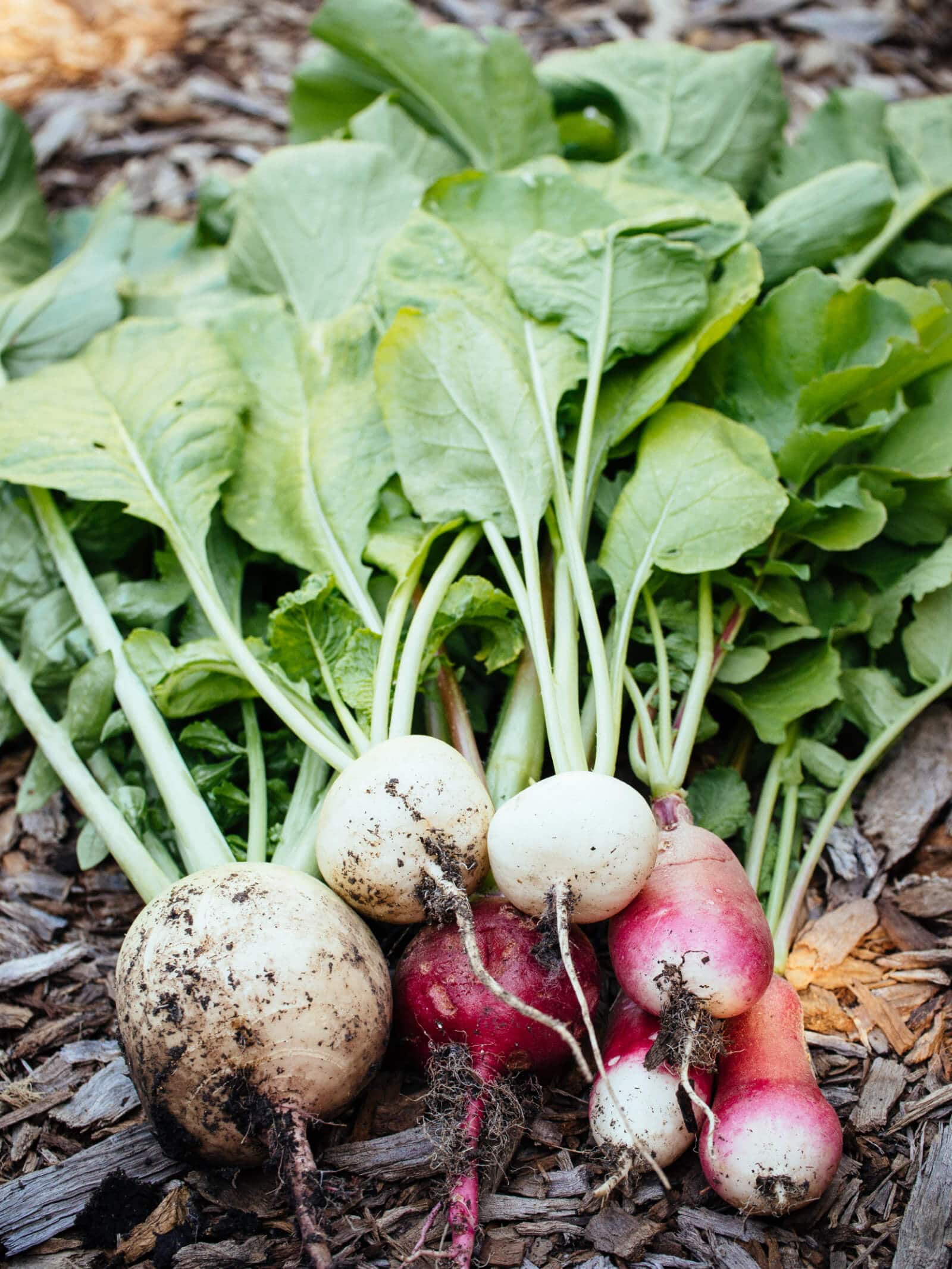
Even though the crisp, peppery roots (Raphanus sativus) are one of my favorite salad greens, I often forget to eat the radish tops.
But I like putting vegetable tops and tails back together in my recipes. The radish plant is a great example of this—it tastes great either raw or cooked.
You can eat winter radishes (like daikon, watermelon, or Black Spanish radish) as well as their leaves in the spring, summer, and fall.
Winter radishes are great because you can pick a few leaves from each plant all season long until the crop is ready. Let some of these plants flower if you forget to pull them up. The seeds make great pickled radish pods for a snack.
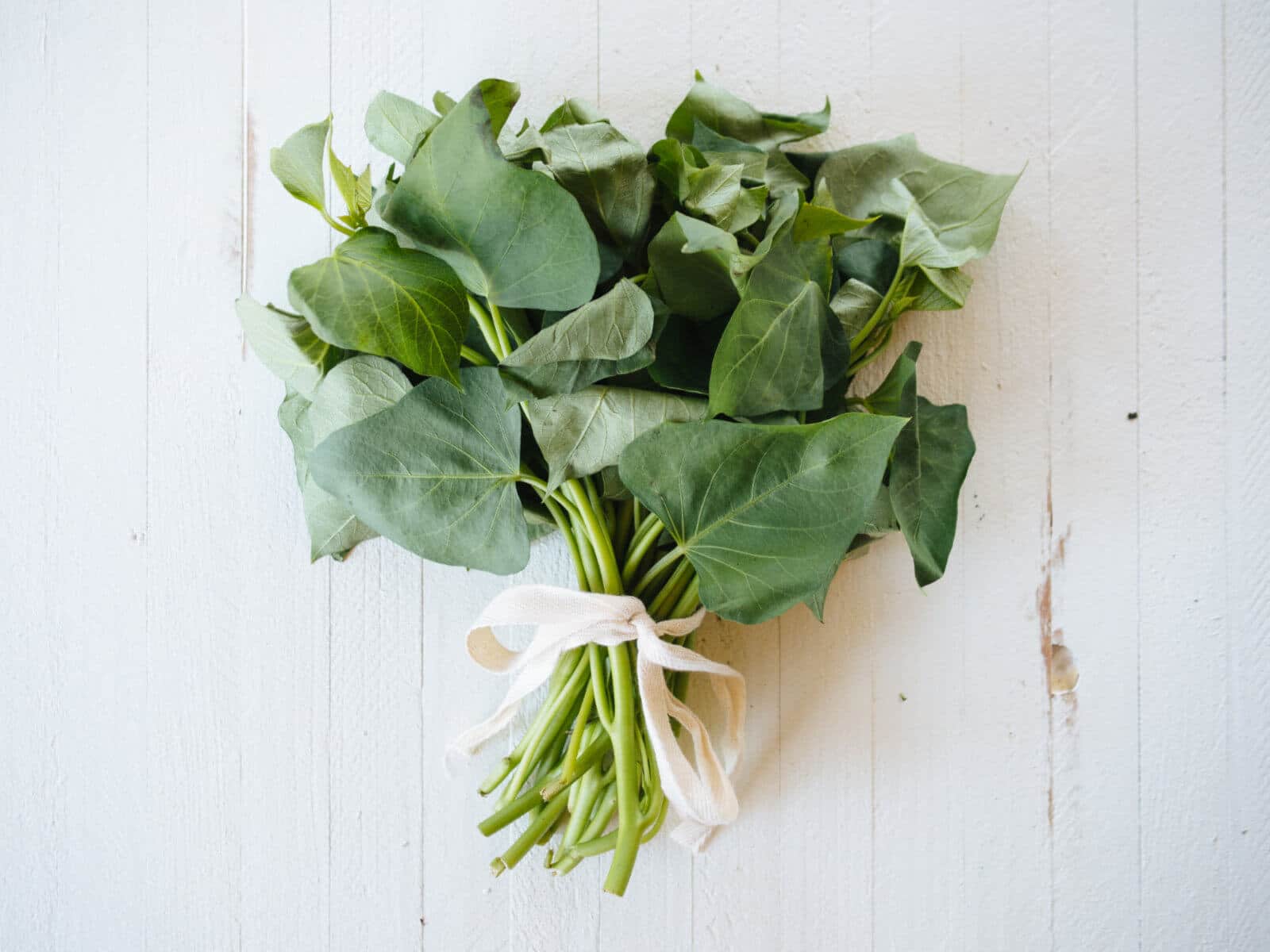
Bean Leaves Are Edible And Delicious
FAQ
What are the benefits of green beans leaves?
What do bean leaves taste like?
Are yard long bean leaves edible?
Are green bean leaves edible?
Like many other bean leaves, green bean leaves are edible. They can be used in various cuisines or eaten raw. However, if you intend to eat them raw, opt for younger leaves since they are relatively more tender. Older green bean leaves are more fibrous. So, you may have a hard time chewing them raw.
Is it safe to eat uncooked beans?
In general, it is unsafe to consume uncooked or raw beans. This applies to uncooked or raw green beans and legumes like peas and lentils. Beans contain compounds called lectins that serve to protect plants from environmental insults, but they can also have toxic effects on humans when consumed in large amounts. Eating raw uncooked beans can cause digestive symptoms like severe nausea, vomiting, diarrhea, stomach pain, and bloating. Lima beans and kidney beans contain some of the highest concentration of lectins and consuming only a few of the beans will cause symptoms similar to food poisoning. Cooking destroys lectins and makes beans safe to eat. Canned beans are also safe because they are precooked.
Are beans edible?
Beans are a staple in most vegetable gardens. While most people think only of the beans themselves, bean leaves offer a number of benefits. For a start, they’re edible. They also provide lots of material for a compost pile and when trellised can provide summer shade. They may even repel bedbugs. At least 40,000 different beans have been identified.
Are black bean leaves edible?
All types of bean leaves, including black bean leaves, are edible. They can be cooked in various dishes or eaten raw. But many people prefer cooking them because they are pretty fibrous. Leaves from younger plants are tender and relatively easier to chew. So, if you are bothered about how fibrous black bean leaves are, get them from young plants.
